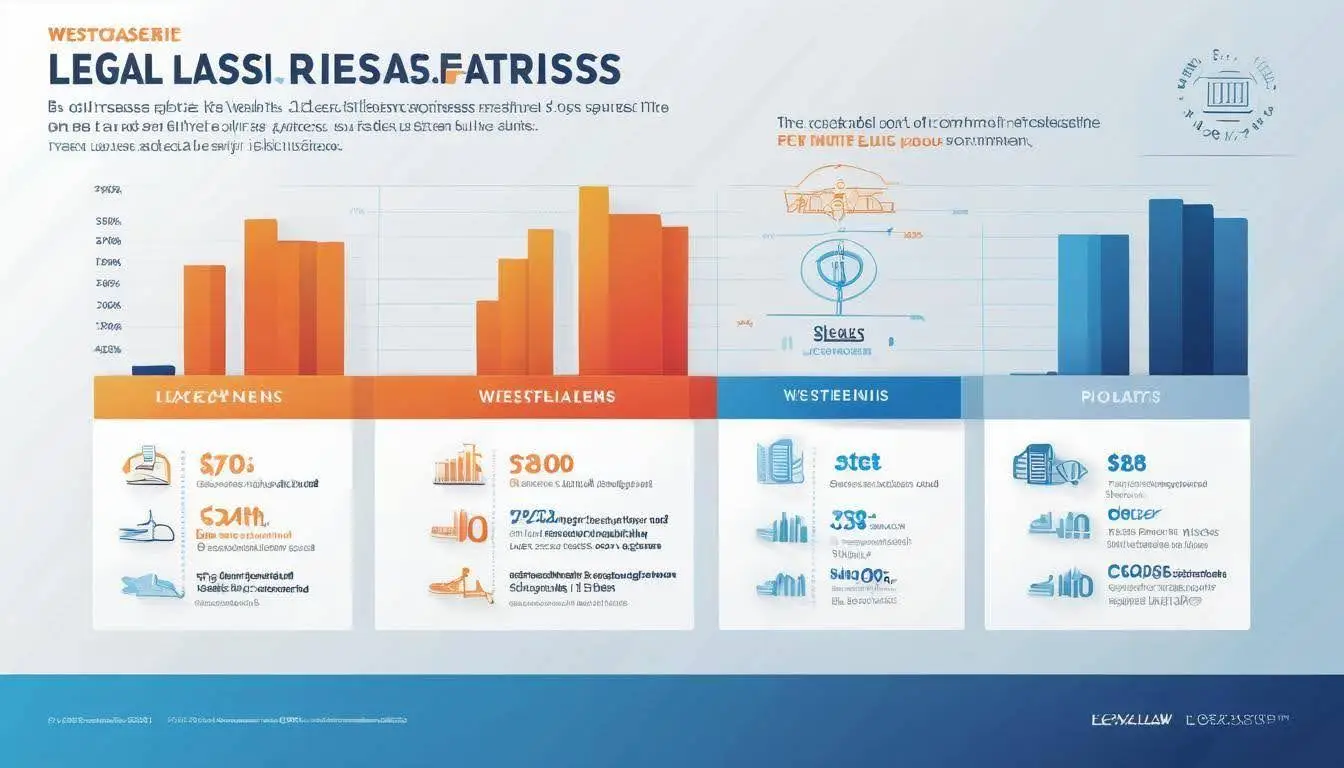

Legal research can often feel like searching for a needle in a haystack, particularly when time is short, and accuracy is paramount. Thankfully, mastering the right legal research software can turn this daunting task into an efficient and streamlined process. Imagine shaving hours off your day, leaving more time for thorough case preparation and perhaps even that overdue yoga session.
We've put considerable effort into compiling this comprehensive guide to help you navigate through various options and features of legal research tools. Drawing from real-world experiences of seasoned attorneys who made significant improvements by adopting better software, we aim to provide you with practical tips and techniques tailored for effective use. Now that you're aware of the potential benefits let's dive deeper into evaluating which software will serve you best.
To use legal research software effectively, start by familiarize yourself with its features and functionalities, such as searching for case law, statutes, and secondary sources. Utilize advanced search options, set up alerts for relevant updates, and leverage tools like citators to ensure that the case law you are referencing is still considered "good" law.

When it comes to choosing the right legal research software, it's not just about picking a popular name; it’s about finding a tool that enhances your workflow. The effectiveness of legal research software can dramatically impact how efficiently you serve your clients and prepare for cases. Thus, evaluating it carefully is crucial.
There are several important factors to keep in mind while assessing different platforms. A well-rounded evaluation goes beyond mere functionalities; it involves a comprehensive understanding of how a platform aligns with your specific needs.
Cost is often the first consideration. Legal research tools can vary widely in price, from affordable options for solo practitioners to premium subscriptions for large law firms. It’s wise to compare prices across different platforms and ensure that you're not only getting the best value but also selecting a service that fits within your budget constraints.
Yet cost alone doesn’t determine quality; content coverage is equally vital.
Different platforms cater to various niches within the law, offering varying levels of content depth. For instance, some may boast extensive databases covering numerous areas of law, while others specialize in specific legal fields—such as intellectual property or family law. This specialization might meet the unique needs of your practice, so knowing what core areas you need support in will streamline your research efforts significantly.
After considering cost and content, you should think about the user experience.
The user interface can drastically affect how quickly you learn and navigate through the software. An intuitive design minimizes frustration and maximizes efficiency, allowing you to focus on your research instead of struggling with complicated navigation systems. Seek platforms that offer trials or demonstrations so you can gauge which ones feel most comfortable for you.
As you weigh these functional aspects, don’t overlook ongoing support and assistance.
Lastly, customer support is crucial when problems inevitably arise. Having reliable service at your fingertips means any questions or issues can be resolved efficiently, allowing you to focus on delivering results for your clients without unnecessary delays. It’s worth investigating reviews or testimonials regarding customer service performance before making a commitment.
For example, I remember speaking with an attorney who initially used one of the less popular programs on the market. She recounted how her constant battles with its clunky features led her to spend more hours poring over case laws than actually representing her clients effectively. After switching to Westlaw—a platform known for its streamlined interface—she found herself completing research tasks in half the time. Her newfound efficiency translated into better client interaction and increased satisfaction all around.
With these factors in mind, let’s shift our focus to explore specific attributes that distinguish these tools from one another and enhance their usefulness in real-world applications.

When you're exploring legal research software, understanding which features are essential is crucial for maximizing its potential. Each feature acts like a cog in the machinery of legal research, ensuring smooth operation and accuracy as you navigate complex legal landscapes.
| Feature | Importance |
|---|---|
| Advanced Search | Critical for finding precise case laws, statutes, and legal precedents. |
| Citator Services | Essential for verifying whether legal references remain good law. |
| Annotations & Notes | Useful for keeping detailed records directly within the platform. |
| Updating Services | Keeps you informed about the latest legal developments and changes. |
| Integration Options | Ensures seamless integration with other legal tools or document management systems. |
Take Advanced Search for instance. This feature allows you to fine-tune your searches using various filters, which is particularly beneficial in a field where details matter immensely. Think of it like trying to find a needle in a haystack; without the right tools, you're just sifting through what could feel like an endless pile of irrelevant information.
Similarly, Citator Services play an invaluable role in maintaining the reliability of your research. These services inform you whether the cases you're relying on are still valid or if they've been overruled or distinguished by newer decisions.
For example, tools like LexisNexis offer a "Shepardize" feature that vividly illustrates how a particular case has been treated by courts over time. This not only gives you peace of mind but can also prevent potentially costly errors in your arguments.
Moving on to Annotations and Notes, this feature enables you to maintain detailed documentation while researching. Imagine drafting an important motion; having all your thoughts and findings integrated within the same platform allows for smoother transitions when piecing together arguments later on.
Moreover, Updating Services can alert you to significant changes in the law or newly published relevant cases that could affect your current work. Staying informed can be challenging; having automated updates saves time and ensures your research remains current and compliant.
Finally, consider Integration Options. As legal professionals often use multiple tools—from practice management software to document drafting applications—having a legal research platform that seamlessly integrates with these other tools enhances workflow efficiency. This interconnectivity allows for better communication between different stages of case preparation.
By focusing on these key features, you're not just selecting software; you're equipping yourself with a vital toolkit designed to streamline your research process and sharpen your legal acumen. Next, we'll explore strategic approaches that can transform your search efforts into successful outcomes.

To begin, using keywords effectively might be one of the most straightforward yet powerful techniques in your legal research toolkit.
Initiate your search with broad terms to capture a wider scope of relevant cases and statutes. However, don't hesitate to pivot towards narrower, more specific keywords as you refine your results. This process allows you not only to access the overarching themes pertinent to your case but also to hone in on precisely what you need later in the search process.
Adding Boolean operators, such as AND, OR, and NOT, enhances this approach tremendously. For instance, inputting “negligence AND liability” will yield results that contain both terms while filtering out unrelated information, helping you zero in on essential materials.
Next up is harnessing the power of Natural Language Processing (NLP), which has become a noteworthy feature in many contemporary legal databases like Westlaw Edge and LexisNexis.
With NLP capabilities, the software can understand queries posed in plain English rather than relying solely on technical jargon. If you were to type a question such as "What are the legal precedents for negligence in my state?" the software will intelligently parse the query and return relevant cases and statutes, improving your search considerably. This means less time translating legalese and more time focusing on strategically building your argument based on solid findings.
After setting up a strong foundation with appropriate keywords and employing natural language processing, the final step involves filtering through your search results efficiently.
By applying filters for jurisdiction, court level, date range, and document type, you can sift through vast amounts of information with impressive speed. Imagine having an abundant library at your fingertips—you might find it exhilarating at first, but soon you'd be overwhelmed without any system to organize what you're looking for.
This filtering process can save significant amounts of time during research sessions because it allows you to focus on what is truly relevant to your specific needs. For instance, if understanding local precedent is critical to your case, specifying jurisdiction ensures that every source you consult is tailored to your geographic area.
Moreover, sorting options can be extremely advantageous—consider arranging results by relevance or recency. Such strategies will ensure you're always on the pulse of timely developments while also prioritizing material that holds weight in similar legal contexts.
As you apply these strategies methodically, you'll find yourself not merely sifting through information but engaging meaningfully with it—setting a solid groundwork for informed analysis and stronger legal arguments lies ahead.

Analyzing legal information is a cornerstone of effective legal research. Once you've gathered the pertinent materials, the real work begins. Thoughtful examination of this data will enhance your understanding and strengthen your legal arguments. Proper analysis involves not just reading but digesting the contents through careful techniques and frameworks.
Utilize the built-in tools within your legal research software to highlight significant passages and annotate directly on the documents. This approach does more than mark important information; it engages you in an interactive learning process. When you're wrapping up your analysis for briefs or reports, these highlights and annotations act as touchstones. They can remind you not only of relevant points but also of your thought process during the initial read-through. It’s like leaving breadcrumbs for yourself in a dense forest.
Always compare your findings with secondary sources like law reviews or treatises. This practice ensures that you're aligning with existing interpretations and sparks deeper insights. Engaging with multiple viewpoints creates a richer context for your own analysis. Think of this method as each academic piece being part of a broader conversation—when you reference them, you're joining in.
Understanding legal precedents in their specific contexts can be key to successfully applying them to new cases. For instance, if you’re analyzing a recent court decision on contract law, explore past cases that influenced this decision. Consider how societal changes may have shifted interpretations over time. This depth adds significant weight to your analysis.
A study found that lawyers spend as much as 58% of their time sifting through case material; therefore, using effective analytical tools isn't just about improving quality—it's about drastically reducing time spent on this essential aspect of legal work.
As you become adept at analyzing legal information, you'll find it increasingly easier to integrate comprehensive insights back into your practice or scholarly work, paving the way for stronger arguments and more persuasive communication with clients or courts while enhancing functionality within your daily operations.

Integrating legal research software means moving beyond mere familiarity with the tools—it's about embedding them into the fabric of your daily legal tasks. Imagine starting your day not with a tangled pile of file folders but by opening your research software that organizes various cases and statutes at your fingertips. This shift can be a game changer, allowing you to spend less time searching and more time strategizing.
For instance, when faced with an upcoming trial, having an organized approach to utilizing your software can boost efficiency substantially. Begin each day by checking alerts for any new case law or updates relevant to your active cases. This practice ensures that you remain informed about pertinent changes without sifting through countless resources. You can set up specific keywords or topics to track, which will automatically filter important information for you. It’s like having a personal assistant keeping you updated on what matters most.
Once you've gathered relevant case law and statutes, consider utilizing built-in annotation tools within your software. Rather than scribbling notes on sticky paper that may get lost, annotate directly within the documents. This not only keeps everything centralized but also makes revisiting the materials far easier. Having notes attached right where the information is needed provides quick context during meetings or hearings.
Many users find these organizational strategies help lessen stress and improve clarity as they prepare for court appearances or client consultations.
Another valuable practice emerges when it comes to client communication. By exporting organized documents and research findings into client-friendly formats, you illustrate professionalism and instill confidence. Software often allows formatting adjustments that align with your branding standards, creating a seamless visual presentation. Clients appreciate concise summaries coupled with thorough documentation, enhancing their reliance on your expertise.
However, it’s crucial to recognize that while these integrations significantly streamline processes, they come with a learning curve. Take time to familiarize yourself with all features available in the software; tutorials and workshops can assist greatly during this phase.
As you become proficient, remember regular check-ins on your usage pattern within the software will help refine how you can utilize it in new ways as cases evolve. This continuous improvement not only empowers your workflow but also sets the stage for addressing obstacles that may arise along the way.

Even with top-notch tools, users often encounter challenges in mastering legal research software. One significant obstacle is the steep learning curve associated with these complex systems. Many new users find themselves overwhelmed by the plethora of features and functions designed to facilitate efficient legal research. This complexity can discourage users from fully utilizing the tool's capabilities, leading to frustration.
The solution lies in embracing a mindset geared towards learning. It's important to invest time in vendor-provided training sessions or online tutorials. Many platforms, such as LexisNexis and Westlaw, offer extensive training materials tailored for beginners, complete with videos, webinars, and interactive guides designed to help users get up to speed efficiently. These resources not only clarify functionalities but also enhance user confidence as they navigate the software over time.
However, learning curves are just one part of the challenge; financial constraints add another layer of complexity.
For solo practitioners or small firms, the high subscription costs of powerful legal software tools can be prohibitive. Legal professionals may hesitate to commit financially due to uncertainty about whether the software will meet their specific needs or improve efficiency.
A smart approach is to explore bundled packages or introductory offers that provide access at reduced rates initially. Additionally, many companies offer free trials which allow potential users to experiment with the software before making a financial commitment. This way, professionals can assess whether the tool enhances their workflow without incurring costs upfront.
Research indicates that professionals who invest in the right training for their legal software see up to a 40% increase in research efficiency. Such an improvement cannot be ignored; leveraging resources wisely leads to significant return on investment.
Addressing these challenges can transform your interaction with legal research software into a seamless experience.
By acknowledging and tackling the steep learning curve and financial constraints head-on, you position yourself strategically to maximize your investment in technology. Make use of available educational resources and seek cost-effective options that align with your practice's budget.
The result? Enhanced efficiency in your research processes and ultimately better outcomes for your clients—factors that contribute to a thriving legal practice.
Familiarizing yourself with the interface of legal research software is crucial for maximizing efficiency and productivity. Studies show that users who engage with tutorials and user guides can increase their proficiency by up to 30%, enabling them to navigate databases more effectively and find relevant information quicker. This foundational step not only prevents frustration down the line but also enhances your overall research experience, allowing you to focus on developing strong arguments based on thorough analysis rather than struggling with unfamiliar tools.
To effectively save and organize your legal research findings, utilize the bookmarking and document management features available in your legal research software. These tools allow you to tag important documents and easily retrieve them later, enhancing your efficiency by up to 30%, as studies show that organized researchers spend significantly less time searching for information. By systematically categorizing your findings, you can streamline your workflow and reduce the risk of overlooking critical data during case preparation.
The best practices for organizing and managing documents retrieved from legal research software include implementing a consistent naming convention, utilizing folders for categorization by case type or subject matter, and leveraging tagging features for quick retrieval. Studies indicate that effective document organization can reduce time spent searching for information by up to 30%, thereby enhancing productivity. Additionally, regularly reviewing and archiving outdated documents ensures that your workspace remains streamlined, making it easier to focus on current cases while maintaining compliance with legal standards.
Utilizing filters and advanced search options is crucial for effective legal research, as it allows you to pinpoint the most relevant materials tailored to your specific needs. For instance, narrowing your search by jurisdiction can yield results that are not only legally accurate but also contextually appropriate for your case. Studies have shown that using such targeted approaches can improve the efficiency of finding pertinent documents by up to 60%, saving both time and resources in your legal practice.
When analyzing search results in legal research software, it is essential to critically review the returned cases and statutes, focusing on annotations and summaries that can provide valuable context regarding their applicability. By distinguishing relevant precedents from less pertinent materials, you can strengthen your legal arguments. Studies have shown that effective use of legal research tools can improve case outcome success rates by up to 30%, emphasizing the importance of a thorough analysis in ensuring informed decision-making.
Legal research software significantly improves efficiency for lawyers by streamlining the research process, allowing them to quickly locate relevant case law, statutes, and legal precedents. For instance, studies show that attorneys can reduce the time spent on legal research by as much as 50% using advanced software tools compared to traditional methods. This speed not only enhances productivity but also allows lawyers to focus more on analysis and strategy, ultimately leading to better client outcomes and increased profitability for their firms.
Staying updated is crucial in the fast-paced legal environment, and leveraging alerts from legal research software can significantly enhance your practice. By setting up notifications for new developments in specific areas of law, you ensure that you never miss critical updates that could impact your cases. According to a survey by the American Bar Association, 75% of attorneys reported that staying informed about legal changes directly contributes to better case outcomes. Therefore, utilizing these features not only saves time but also strengthens your legal strategies.
The most commonly used features of legal research software include advanced search functionality, which allows users to conduct precise and comprehensive searches through vast databases of case law, statutes, and regulations; citation analysis tools that help verify the validity of legal references; and case management integration that streamlines workflow. According to recent surveys, approximately 70% of legal professionals cite the ability to filter search results as a critical feature, underscoring the importance of efficiency in legal research tasks. These features significantly enhance productivity and accuracy in legal work.
To effectively perform searches in legal research software, begin by entering carefully chosen keywords or phrases that are specific to your legal issue, as well as relevant case citations when available. This method streamlines the search process and enhances the accuracy of results. According to studies, well-structured queries can increase retrieval effectiveness by up to 60%, ensuring you access pertinent statutes, regulations, and case law more efficiently. Additionally, utilizing Boolean operators (AND, OR, NOT) can further refine your search results and help locate the most relevant documents.
Yes, there are specific training resources available for mastering legal research software, including online courses, tutorials, and webinars offered by leading providers such as Westlaw and LexisNexis. These platforms often provide comprehensive training modules that cater to different skill levels, enabling users to enhance their proficiency effectively. For example, research indicates that users who engage with these training resources report a 30% improvement in research efficiency within the first few months of regular use. Additionally, many law schools incorporate these tools into their curricula, ensuring students are well-prepared for real-world applications.
Different legal research platforms vary significantly in usability and features; for instance, Westlaw is often praised for its intuitive interface and comprehensive database, while LexisNexis offers robust analytics tools and advanced search options. A survey from 2023 indicated that 65% of users preferred Westlaw for ease of use, whereas 55% leaned towards LexisNexis for its depth of legal coverage. These preferences highlight the importance of aligning platform capabilities with specific research needs, as well as user familiarity with the software.
Law Resource, a trusted name in legal advocacy, is revolutionizing the way accident victims and consumers access vital legal information.